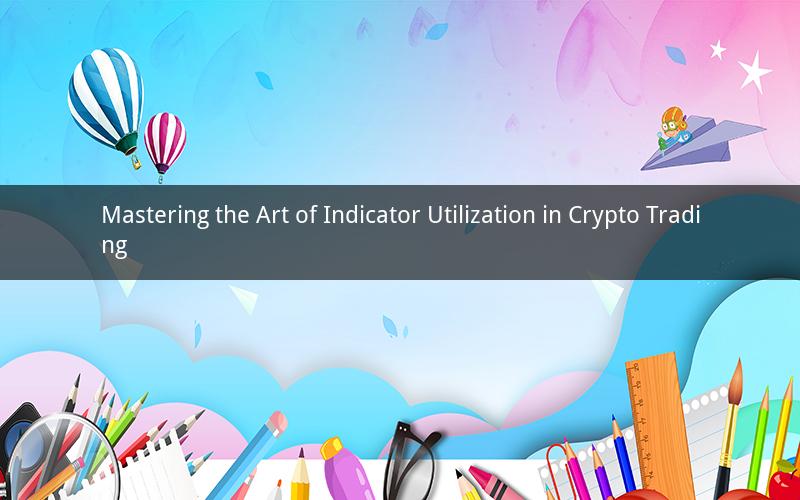
Introduction:
In the dynamic world of cryptocurrency trading, the use of indicators has become an essential tool for traders. These tools provide valuable insights into market trends, helping traders make informed decisions. However, effectively using indicators can be challenging, especially for beginners. This article will delve into the world of indicators, exploring their types, applications, and best practices for their use in crypto trading.
1. Understanding Indicators:
Indicators are mathematical tools that analyze historical data to provide insights into market trends. They can be categorized into three main types: trend indicators, momentum indicators, and volatility indicators.
Trend Indicators:
Trend indicators help traders identify the direction of the market. Some popular trend indicators include Moving Averages (MA), Relative Strength Index (RSI), and Average Directional Index (ADX).
Momentum Indicators:
Momentum indicators measure the speed and direction of price movements. Examples of momentum indicators are the Moving Average Convergence Divergence (MACD) and Stochastic Oscillator.
Volatility Indicators:
Volatility indicators help traders identify periods of high or low market volatility. Common volatility indicators include Bollinger Bands and Average True Range (ATR).
2. Choosing the Right Indicators:
Selecting the appropriate indicators for crypto trading is crucial. Traders should consider the following factors when choosing indicators:
a. Trading Style: Different indicators are suitable for different trading styles. For example, momentum indicators are ideal for short-term traders, while trend indicators are better suited for long-term traders.
b. Time Frame: The time frame of the indicator should align with the trader's trading strategy. Short-term traders should use short-term indicators, while long-term traders should use long-term indicators.
c. Correlation: It is essential to ensure that the indicators chosen are not highly correlated. High correlation can lead to conflicting signals, making it difficult to make informed decisions.
3. Combining Indicators:
Combining multiple indicators can provide a more comprehensive view of the market. Traders can use a combination of trend, momentum, and volatility indicators to confirm their trading decisions. Here are some popular combinations:
a. Moving Average Convergence Divergence (MACD) + Moving Average (MA): This combination helps identify potential buy and sell signals by analyzing the relationship between the two indicators.
b. Relative Strength Index (RSI) + Stochastic Oscillator: This combination can help traders identify overbought or oversold conditions in the market.
c. Bollinger Bands + Average True Range (ATR): This combination helps traders identify potential breakouts and reversals in the market.
4. Best Practices for Using Indicators:
To effectively use indicators in crypto trading, traders should follow these best practices:
a. Backtesting: Before using indicators in live trading, it is crucial to backtest them using historical data. This will help traders understand the performance of the indicators and make informed decisions.
b. Risk Management: Traders should always use proper risk management techniques when using indicators. This includes setting stop-loss orders and managing position sizes.
c. Continuous Learning: The crypto market is highly volatile, and indicators can change over time. Traders should continuously learn and adapt their strategies to stay ahead of the market.
5. Conclusion:
Indicators are powerful tools that can help traders make informed decisions in the crypto market. By understanding the types of indicators, choosing the right ones, combining them effectively, and following best practices, traders can improve their chances of success. However, it is important to remember that indicators are just one aspect of trading and should not be used in isolation.
Q1: What is the purpose of trend indicators in crypto trading?
A1: Trend indicators help traders identify the direction of the market, allowing them to make informed decisions about entering or exiting positions.
Q2: How can combining indicators improve trading decisions?
A2: Combining indicators can provide a more comprehensive view of the market, reducing the risk of false signals and increasing the accuracy of trading decisions.
Q3: What is the significance of backtesting indicators before using them in live trading?
A3: Backtesting helps traders understand the performance of indicators in historical data, allowing them to make informed decisions about their effectiveness in live trading.
Q4: How can traders manage risk when using indicators in crypto trading?
A4: Traders can manage risk by using proper risk management techniques, such as setting stop-loss orders and managing position sizes, in conjunction with indicators.
Q5: Why is continuous learning important when using indicators in crypto trading?
A5: Continuous learning helps traders stay updated with market trends and adapt their strategies accordingly, ensuring they remain competitive in the highly volatile crypto market.